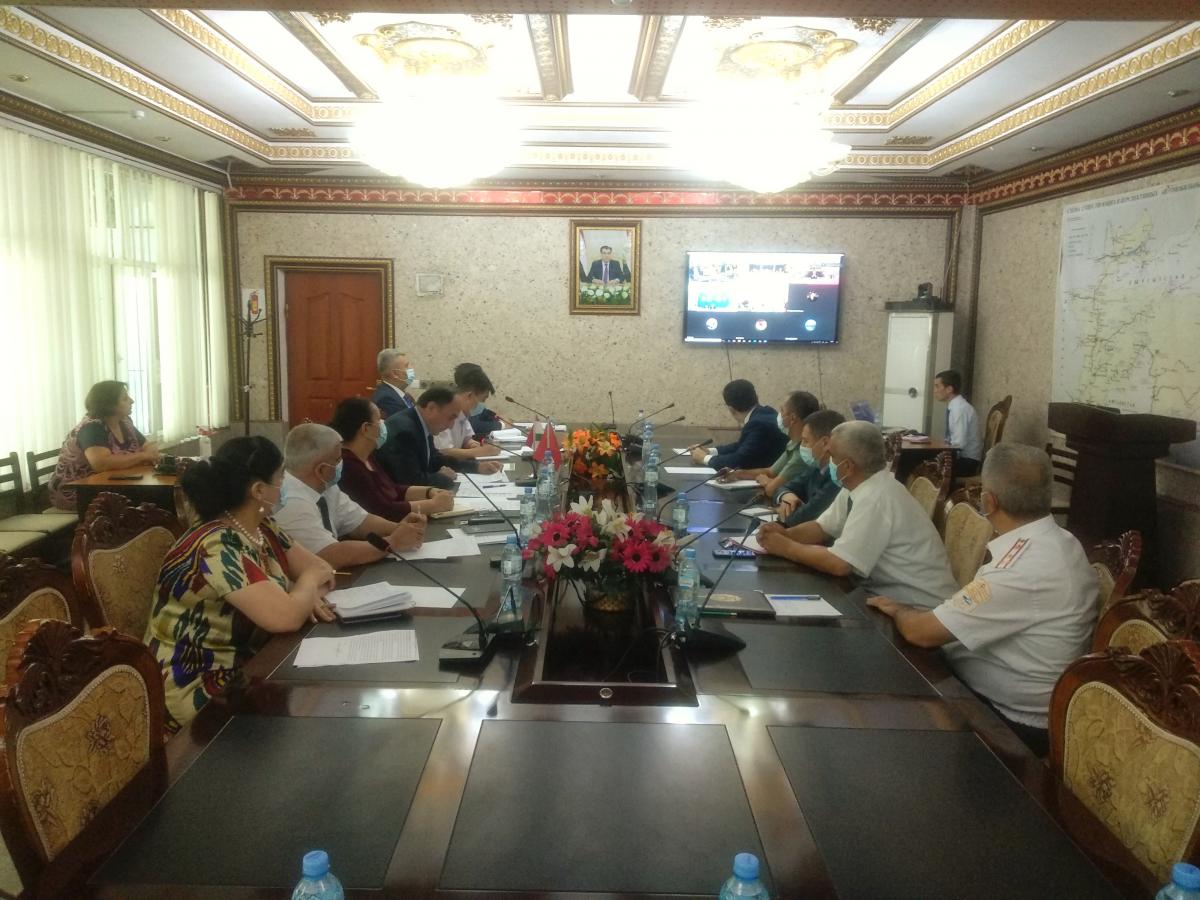Operations of the Kulma-Qarasu border crossing point (BCP) were discussed at a virtual meeting of Tajik Minister of Transport Azim Ibrohim with Deputy Head of China’s Xinjiang Uyghur Autonomous Region (XUAR) Chen Weixun that took place on August 10, according to the press center of the Ministry of Transport of Tajikistan (MoT).
Currently, 30-35 freight containers pass through the Kulma-Karasu BCP per day. Over the first seven months of this year, 36,831 tons of cargo have reportedly passed through this border crossing point, which was 17 percent more than in the same period last year.
During the meeting, Tajik minister proposed the Chinese side to consider the possibility of transporting goods by trailers and semi-trailers alongside container shipping.
He also proposed the Chinese side to consider the issue of accepting empty containers from Tajikistan without additional payment and assisting the work of Tajikistan’s cargo cranes on loading and unloading containers in neutral territory.
Besides, Ibrohim asked the Chinese side in the transportation of Tajik goods that have been stored in warehouses in Kashgar city for more than a year at prices acceptable for the Tajik side.
Mr. Chen promised that the Chinese side would consider those proposals.
Recall, traffic via the Kulma BCP along the Tajikistan-China border was restored in April and it now operates at full capacity.
The Kulma BCP, which is the only border crossing point along Tajikistan’s common border with China, had been closed for traffic since October last year. The Kulma BCP had reportedly been closed at the initiative of the Chinese authorities due to the coronavirus crisis.
Tajik entrepreneurs, however, associated the closure of the border with the Chinese authorities’ politics aimed at protection of interests of Chinese entrepreneurs.
The Kulma border-crossing checkpoint is the only overland border crossing along the 450-kilometer boundary between Tajikistan’s Gorno-Badakhshan Autonomous Region (GBAO) and China’s XUAR.
Opened in 2004, the Tajik-China trade route runs from Khorog, the capital of Gorno Badakhshan in southeastern Tajikistan, over a high-altitude plateau and then down into China, where it ends in the city of Kashgar, 700 kilometers away.
As conditions are so tough at the Kulma border crossing, which is located on a mountain pass 4,400 meters high, until May 1 2008, the gateway had stayed open only 15 days out of every month, while from November through April it had been closed altogether.
From 2008 to 2012, the Kulma crossing operated every day, except weekends, from May through November.
Tajikistan and China reached an agreement on a year-round operation of the Kulma border-crossing checkpoint on December 29, 2011 but it became possible only in 2012, when all necessary conditions were created to ensure the year-round operation of the Kulma border crossing.
The Kulma Pass is a mountain pass across the Pamir Mountains on the border between the Gorno-Badakhshan Autonomous Region of Tajikistan and the Xinjiang Autonomous Region of China. Asian Highway AH66 runs through the pass.
The pass opens from the north to the southeast, and is 500 m wide from north to south and 1 km in length from east to west with a gentle incline not exceeding 20 degrees. On the Tajik side, the pass is 80 km by road to Murgab. On the Chinese side, the pass is 13.9 km from Karasu, a port of entry on the Karakorum Highway which leads to Tashkurgan (60–70 km) and Kashgar (220 km).







